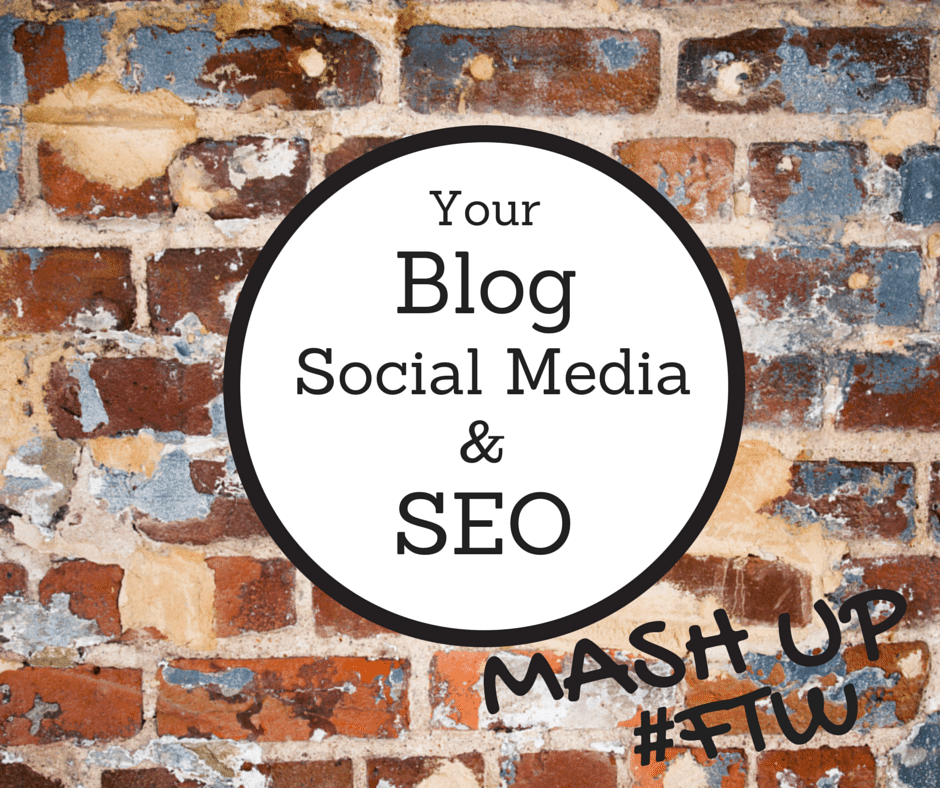 Buckle up, friends. SEO is changing again and in order to stay relevant in search, some things may have to change at your company. Content marketing has been a buzzword for a few years now and many people have ignored its impact. Sure there are those of us who adopted early but now there’s no time to waste. Your blog, social media and SEO now all mash up together and your business needs to master them all if you want to win the internet!
Buckle up, friends. SEO is changing again and in order to stay relevant in search, some things may have to change at your company. Content marketing has been a buzzword for a few years now and many people have ignored its impact. Sure there are those of us who adopted early but now there’s no time to waste. Your blog, social media and SEO now all mash up together and your business needs to master them all if you want to win the internet!
To show you how much things have changed with your digital presence, I’m going to share some pretty compelling facts with you. From there we’ll explore the building blocks that your business needs to embrace in order to capture organic search traffic.
1. Insights from Search Engine Journal’s PubCon Digital Marketing Conference:
- SEO is getting a lot harder than it used to be. There are more variables than ever, and a lot more restrictions from Google as to what you can and cannot do.
- Today’s SEO now involves publishing your own unique content, building an audience on social media, and getting your name out there as an expert by getting content published on other sites. Sound like a lot of work? You’re right!
- Many people are leaving the world of SEO because of how much it’s changed – it’s become too much for some to keep up with.
2. Google’s Latest Update: Panda 4.1
It’s always been in Google’s best interests to deliver search results that meet or exceed the needs of the user. These periodic updates work toward that goal.
Google says Panda 4.1 is supposed to be more precise and will allow more high-quality small and medium-sized sites to rank better.
Google’s Pierre Far: “Based on user (and webmaster!) feedback, we’ve been able to discover a few more signals to help Panda identify low-quality content more precisely. This results in a greater diversity of high-quality small- and medium-sized sites ranking higher, which is nice.”
- Roll out began September 25, 2014
- Rewards “quality” content
- Penalizes “thin” content
Now that you know how things are changing, let’s talk about how your business can roll with it and come out on top.
Your Blog, Social Media and SEO
1. Your Blog
It’s vitally important for your business to have a blog. Not only to rank higher in search but also to increase credibility, visibility and influence with your prospects and customers.
“Thin” content with little to no added value will be penalized. These techniques don’t provide users with substantially unique or valuable content and they’re in violation of Webmaster Guidelines.
- Automatically generated content
- Content from other sources. For example: Scraped content or low-quality guest blog posts
- Doorway pages
- Thin affiliate pages
With Panda 4.1, Google is rewarding “quality” content. What is quality content? Broadly speaking, it’s information you publish that answers your ideal customer’s questions, helps them research their purchase, and informs them of things they didn’t even know they didn’t know. To determine what is “quality” for your particular audience, it’s best to go through a process with an expert to determine your best content strategy.
The 12 key elements of “quality” content
- Content Length. If you want your content to rank highly in the search engines and to attract links, go for longer 1000+ word posts. However, if your resources don’t allow longer posts, don’t stop posting. Quality 500-word posts can rank too.
- Supplement Posts with images, video, infographics and other media.
- Grammar and Spelling. Google has placed a huge emphasis on the trustworthiness of pages and sites. Poor spelling, grammar or typos is much less likely to be seen as trustworthy.
- Page and Text Formatting. High quality content is aesthetically attractive, easy to read, and suitable for scanning and skimming (which is how the majority of your website visitors will consume your content).
- Your Readability Score (based on Flesch-Kincaid readability test)
- Authoritative Content. Posts need to be written by someone who’s got expertise in the subject matter. Best practice: incorporate your employees’ knowledge and expertise in your content.
- The Credibility & Reputation of the Author. What else has the author written? The more content an author publishes, the higher that author’s content will rank in Google search results.
- Social Media (Social Proof Signals). When your posts are shared via social media and users click back to your site, this increases authority.
- Internal & External Links. Links to bad neighborhoods or known spam sites will kill the credibility of your article or site. Likely the most important indicator of the quality of a page is the number and quality of inbound links to that page.
- Domain Quality. If other pages on your site are deemed to be poor quality, this can negatively impact the rankings of the high-quality content.
- Comment Quality. Posts that have a high number of thoughtful comments may be deemed as higher quality than those that don’t. Spammy comments are likely to be seen as negligent.
- Content Value. Your content solves a problem, answers a question, provides entertainment or provides unique expert insight.
2. Social Media and SEO
Now that we’ve outlined how valuable it is for your business to produce quality content, let’s talk about how to develop and execute a strategy where your posts will be seen and engaged with.
Social Signals are actions taken by users that spread web content across social sites. Examples include Facebook likes, Re-Tweets, Pinterest pins or Google +1’s. These signals serve four main purposes:
- To indicate reputation among a target audience.
- To help search engines, especially Google, decide what content is best for users.
- To give web users faith in content, because it has been ‘voted’ on by the masses.
- To help you earn brand loyalty by strengthening your social presence.
Some innovative ways to increase Social Signals:
- Remain active on social media sites. Engage with your audience. Develop leads where appropriate.
- Produce and post “quality” content (as mentioned above). This includes your blog but also means other content you post on social media.
- Post “quality” content from other authoritative sites.
- Embed social share buttons on your website and blog. Google crawls your site and these stats help determine social signals.
- Request readers to share your content.
Some or all of these elements may not be part of your overall digital marketing. If you’re performing your own marketing, now may be the time to seek some expert advice. If you have a provider doing your marketing, these points will be valuable as you review their efforts and results.

I love it when you do these “nuts and bolts” type of posts. For people like me who are really working hard to put out content, having this type of info really helps. Very informative and engaging!
I’m really glad it helps you, David. Thanks, as always.